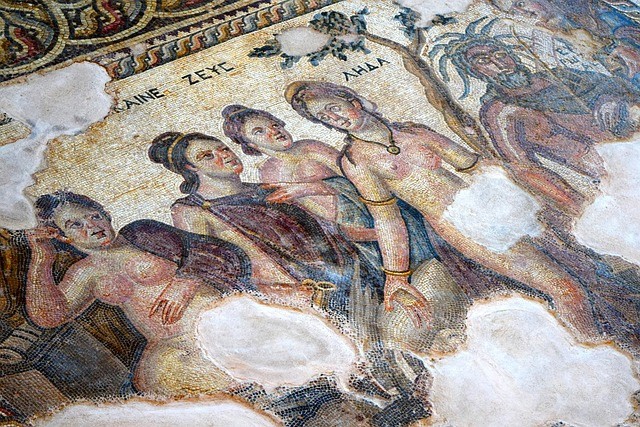
Archeologists found in war-torn Syria a 1,600-year-old mosaic with Hercules with Neptune depicted with connections to the Trojan War. The artifact is thought to have been created around the fourth century A.D., which has been kept over many generations with the majority of the intricacies.
More Relics Discovered in Syria
Syria has had a civil war, making it difficult to search for ancient relics from the past. According to Live Science, finding something this relevant reveals more about the country's history.
A beautiful mosaic from the Roman era depicts scenes from the Trojan War; Heracles' muscles can be seen alongside the Roman god Neptune and his 40 mistresses.
The General Directorate of Antiquities and Museums, a government organization in Syria that oversaw the process of uncovering ancient works of art, said
The 4th-century mural was uncovered in Rastan, located in central Syria, close to Homs, a major conflict area during the revolution. Its dimensions measured about 65.5 feet long by 20 feet wide, remarked agency reps last Wednesday, October 12, according to the agency that worked hard to retrieve the perfectly preserved archaic mural without causing any damage, with images of Hercules with Neptune, noted by Associated Press.
Unbelievably, the structure was occupied by rebel fighters up until 2018, the condition after the centuries was evident in such details as the color of stones used on the antique 1,600-year-old mosaic that is as big as 0.5 by 0.5 inches in radius.
Once the Syrian government had taken control of Homs, archaeologists could dig out the old ruins beneath the building. The digging is still underway as of this writing, mentions BBC.
Roman Mosiac Unearthed
Humam Saad, the associate director of excavation and archaeological research at the directorate, stated that they could not determine the building type, whether it is a public bathhouse or something else, as they have not finalized the excavation so far.
Saad remarked how the mural is exceptional in its details, which have been well-kept over time. Furthermore, it ranks as the most crucial archaeological gem in Syria after the conflict in 2011 called the Arab Spring.
The fresco traces back to the fourth century A.D., after which the Western Roman Empire was divvied from the Eastern Roman Empire, also known as the Byzantine Empire.
Entrepreneurs from Lebanon's Nabu Museum had initially bought the premises and donated them to the Syrian state afterward. The work of art includes representations of the Trojan War, a renowned war contested between the Greeks and Trojans in antiquated Troy, which is modern-day Turkey, as described in epic poetry.
A depiction of Hercules, or Heracles in Greek, killing the Amazonian Queen Hippolyta after being requested to retrieve her belt, one of 12 tasks he was supposed to perform, is included in the images.
Many antiques were either taken or destroyed in the last 11 years as a result of the violence in the country. The painting was not secured while it was being excavated, and some extremists even tried to sell it online.
The 1,600-year-old mosaic from the Roman Byzantian era with Hercules and Neptune is related to the Trojan War and has been unearthed by archaeologists in Syria.
Related Article: Lost Medieval Art In Dark Ages Uses Zwishgold; Secrets Debunked After Several Centuries








